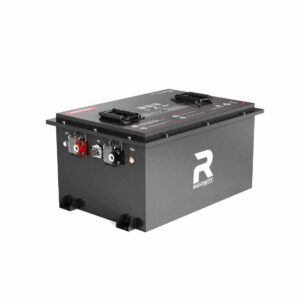How Can Off-Grid RV Power Solutions Reduce Maintenance with Self-Diagnosing Components?
How Do Self-Diagnosing Systems Improve Battery Lifespan in RVs?
By continuously monitoring voltage, temperature, and charge cycles, self-diagnosing systems prevent overcharging, deep discharges, and thermal stress—key factors in battery degradation. For example, lithium-ion batteries with AI-driven BMS adjust charging rates based on usage patterns, extending lifespan by up to 30% compared to traditional lead-acid setups. This reduces replacement costs and ensures consistent power availability.
Advanced systems employ adaptive charging algorithms that consider factors like ambient temperature and historical discharge patterns. During extreme cold, for instance, the BMS might initiate preheating cycles to maintain optimal lithium-ion cell performance. Some systems like Battle Born’s Smart Battery Series even track cumulative stress metrics, alerting users when batteries reach 80% of their projected lifecycle. This data-driven approach enables RV owners to schedule replacements during routine maintenance rather than facing mid-trip failures.
| Battery Type | Without Diagnostics | With Diagnostics |
|---|---|---|
| Lithium-Ion | 3-5 years | 5-8 years |
| AGM | 2-4 years | 3-5 years |
Why Are Self-Monitoring Solar Panels Critical for Off-Grid RV Maintenance?
Self-monitoring solar panels detect shading, micro-cracks, and dirt accumulation that reduce energy harvest. Technologies like Tigo TS4-A-O optimizers provide panel-level diagnostics, while apps like SolarEdge Monitor track performance trends. For RVers, this means identifying issues before they impact power supply—like cleaning panels when efficiency drops by 15% due to dust—saving time and boosting energy yield.

Modern systems now incorporate tilt angle analysis and sun path prediction to maximize solar gain. The latest GoPower! RV systems automatically compare actual output against expected yields based on GPS location and weather data. When parked in wooded areas, the system might recommend panel repositioning through the mobile app or trigger built-in cleaning mechanisms on premium models. These features are particularly valuable for long-term boondocking where consistent energy production is critical for refrigeration and climate control systems.
“Panel-level monitoring has reduced our customers’ energy-related service calls by 42%. The ability to isolate underperforming panels prevents complete system shutdowns during partial shading events.” – Zamp Solar Technical Director
What Are Self-Diagnosing Components in Off-Grid RV Power Systems?
Self-diagnosing components are smart technologies integrated into off-grid RV power systems to autonomously detect issues like battery degradation, wiring faults, or inverter inefficiencies. Examples include battery management systems (BMS) with predictive analytics and solar charge controllers that flag shading or dirt buildup. These tools send real-time alerts to mobile apps, enabling proactive repairs and reducing downtime.
Which Off-Grid Power Systems Integrate Best with Self-Diagnosing Tech?
Lithium-ion solar power systems, such as those using Victron Energy or Renogy components, seamlessly integrate with self-diagnosing tech. These setups combine MPPT charge controllers, hybrid inverters, and cloud-based monitoring platforms. For RVs, all-in-one systems like EcoFlow DELTA Pro offer built-in diagnostics, while modular setups allow customization for van lifers prioritizing scalability.
How to Troubleshoot Off-Grid Power Issues Using Self-Diagnosing Tools?
Modern systems simplify troubleshooting via step-by-step guidance in companion apps. If a fault occurs—say, a sudden voltage drop—the system cross-references data from inverters, batteries, and panels to pinpoint causes (e.g., failed cell in a battery bank). Users receive instructions like “Replace Battery 3” or “Check Panel 2 Connections,” eliminating guesswork and costly professional diagnostics.
What Role Does AI Play in Predictive Maintenance for RV Power Systems?
AI algorithms analyze historical and real-time data to predict failures before they occur. For instance, Bluetti’s AI-Enhanced Power Stations learn usage patterns to forecast battery wear, while systems like Goal Zero use weather data to advise on energy storage needs. This reduces unexpected breakdowns by up to 40%, according to RV industry case studies.
Expert Views
“The integration of self-diagnosing components in off-grid RV systems is revolutionizing nomadic power management. At Redway, we’ve seen a 60% drop in maintenance tickets from users adopting these technologies. The key is combining robust hardware with intuitive software—like our new BMS that predicts battery failures 72 hours in advance. This isn’t just convenience; it’s a safety game-changer for remote travelers.” — Redway Power Systems Engineer
Conclusion
Off-grid RV power solutions with self-diagnosing capabilities are transforming RV maintenance from reactive to proactive. By leveraging AI, real-time sensors, and user-friendly interfaces, these systems reduce manual checks, prevent costly failures, and extend equipment life. As technology advances, expect even tighter integration between diagnostics and automated fixes—making off-grid living both simpler and more sustainable.
FAQ
- Do self-diagnosing systems work with older RV power setups?
- Most require compatible components (e.g., lithium batteries, smart inverters). Retrofit kits like the Victron GX Touch 50 allow partial integration with legacy systems.
- How much do self-diagnosing RV power systems cost?
- Entry-level kits start at $1,200 (e.g., Renogy Rover Elite), while premium setups like EcoFlow + Tigo optimizers exceed $5,000. Most users recoup costs within 2-3 years through reduced maintenance and fuel savings.
- Can these systems prevent electrical fires in RVs?
- Yes. Continuous monitoring detects overheating wires or short circuits, triggering automatic shutdowns. Brands like Zamp Solar include arc-fault detection in their diagnostic suites.
